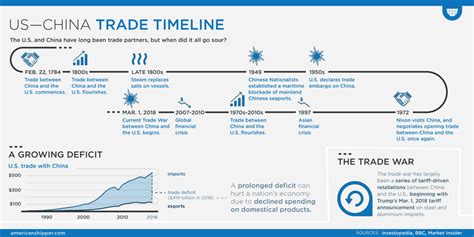“All the news reports indicate Trump was the one making the decision on the scale and sweep of tariffs.”
Back in 1972, when U.S. President Richard Nixon shared a toast with Chinese Premier Zhou Enlai during a banquet in Beijing, who could have foreseen that this gesture would mark the beginning of a complex economic relationship between two global giants? Fast forward to today, where we find ourselves in the midst of a full-blown trade war as President Donald Trump and China’s leaders exchange tit-for-tat tariffs, reshaping the landscape of international commerce.
The intricate dance between these economic powerhouses has captured global attention, sparking debates about strategy, recovery, and geopolitical implications. As tensions escalate and policies shift dramatically, it’s crucial to unravel the layers behind this ongoing saga.
“It got me thinking about how one reads in history books about monarchs or political leaders determining specific military tactics on the battlefield.”
Expert insights shed light on Trump’s unorthodox approach to tariff decisions. The involvement of high-ranking officials without economic backgrounds in such pivotal choices mirrors an era long past when monarchs dictated battlefield strategies. This departure from conventional policymaking underscores a stark contrast in modern governance.
In comparing China and America’s approaches to funding science and technology, a clear divergence emerges. While China champions state-sponsored innovation with unprecedented zeal, America appears to be scaling back its investment in scientific pursuits despite strong backing from tech giants. The philosophies at play underscore contrasting visions for technological advancement and government involvement.
“I think it’s tempting to say that the Chinese regime does conventional industrial policy…”
Delving into China’s recent economic rebound unveils multiple factors driving this resurgence. From reaching stabilization points within business cycles to transitioning towards advanced manufacturing sectors, China navigates complex challenges while maintaining steady growth trajectories. However, looming threats like deflation pose potential risks that demand close observation moving forward.
As alliances form against U.S. tariffs—such as seen with China teaming up with South Korea and Japan—the repercussions reverberate across Asia’s economic landscape. Despite America’s lack of cohesive Asian economic strategies post-Trans-Pacific Partnership era fallout,
The interwoven relationship between American agriculture and Chinese markets illuminates intricate dynamics shaped by free trade principles and productivity disparities. The reliance on American agricultural exports by China underscores mutual benefits tempered by evolving market shares favoring other countries like Brazil for key commodities.
Exploring these nuanced threads woven through decades of diplomatic maneuvers sheds light on how U.S.-China trade policies have evolved—from diplomatic gestures under Nixon to current-day tariff wars reshaping global economics landscapes.

